Top healthcare challenges solved by mobile apps : Part 2 – For patients
In the first part of this article, we highlighted how the mobile app industry is contributing to simplify the major challenges of healthcare providers.
Firstly, it has put a cut on major treatment costs as well as time by reducing the paperwork through Mobile Medical calculators, cloud based data retrieval apps and other clinical mobile apps.
Secondly, medical information and journals are now easily accessible to physicians for informational or cross reference purposes.
Thirdly, it has helped ease the hospital management including the administrational and medical staff with in-house hospital apps, medical record apps, medical inventory apps etc.
Fourthly, such apps have helped bridge the gap between provider and patients and reduced the doctor burnout with the launch of telemedicine and telehealth apps.
Lastly, medical education and training has observed a big boost due to medical learning institutes coming up with their own apps for students.
This part discusses further on how patients are benefiting from healthcare mobile apps today.
Delivering better care to patients
Patients are becoming more engaged in their personal wellness. One in three are choosing to stay healthier and track their health and fitness using apps or specific fitness devices.
32% of mobile health and fitness app users share their collected information with their doctors.
Mobile is helping consumers in a variety of ways by solving the existing healthcare challenges and benefitting them by:
1. Promoting healthy lifestyles
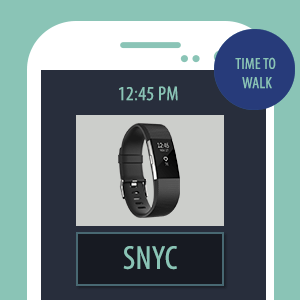
Smartphone health and wellness applications are going beyond recording the number of steps walked or pulse rate. They are actually catalyzing the promotion of healthy living.
The newer wellness apps are a combination of traditional telehealth and physiological tracking, and lifestyle management. The Fitbit and Apple Watch tracking devices and smartphone apps provide scheduled reminders and progress targets set to remind and monitor daily exercise and nutrition.
There are numerous apps that assist the user with weight loss, sleep, yoga, marathon training, cycling, and other targeted workout routines. Some are free while others require a fee or subscription.
There are apps for new parents that help them track their baby’s progress, weight, development, and nutrition needs. Attending to baby’s wellbeing from the first day helps ensure positive development.
Apps and devices that are yet to come to the market will expand detection of cholesterol, heart rate, and infection.
2. Managed medication
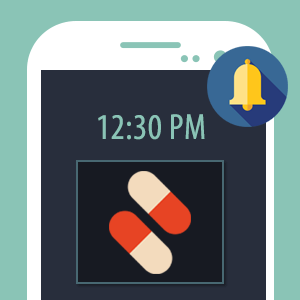
Apps make it easier to keep a managed record of the scheduled and needed medications. For instance, diabetes, Alzheimer’s or dementia patients can now set their pill reminders on their smartphones using free apps like Medisafe and medicine tracker to take timely medication.
Prescription and pharmacy information may be saved and medication consumption can be recorded. This information is of great use for the physicians and pharmacists.
The way it is important to know what medication is needed, it is also important to ensure whether patients are taking the right one and are not exposed to any adverse reaction. WebMD and Medscape provide such information on possible drug interactions.
3. Proper care information in cases of emergency
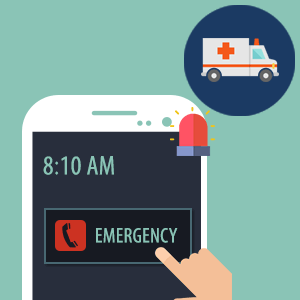
Your phone may be turned into a life-saving device at any moment. Hoping you never need it, it is better to have the emergency mobile app on your device than have an emergency and not have the information needed to assist.
The WikiHow app is designed to cover all emergencies from CPR and choking to animal attacks, vehicle rescues, and wilderness survival. It provides information and basic instruction and procedure.
The Outbreaks Near Me app is designed to alert the user to current disease outbreaks in their neighborhood such as:
- H1N1 influenza,
- whooping cough,
- measles,
- chickenpox, etc.
4. Improved access to physicians
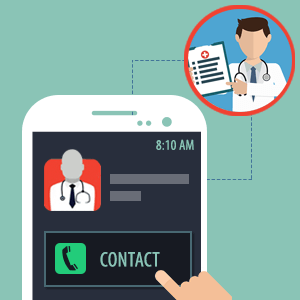
Insurance companies that routinely handle patient medical expenses may offer apps that can help make tedious searches for qualified providers easier. The insurance company may provide a list of providers affiliated with them. They can refer those based-on location and specialty.
Telemedicine is the new buzz that has helped eliminate the problem of healthcare delivery in the US.
Certain Telemedicine apps support video calling to physicians anywhere from a mobile device without any appointment including 24*7 support. In some states, it is permitted to prescribe medicines virtually as well.
5. Easily accessible medical reports
Earlier, it was a tedious task to access reports from the physicians either due to their unavailability or due to distant collection centers. Mobile apps have simplified accession of patient reports by making them online and just a touch/click away.
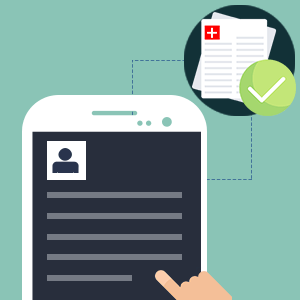
Healthcare mobile apps such as MyChart helps the patient manage their health information and,
- communicate it to their doctor on their mobile device,
- discuss it with their specialist(s) on their mobile device, and
- access their health reports and records without having to pick them up or get copies of them from the physician.
The Microsoft HealthVault mobile app has been available for quite a while. It allows patients:
- to keep their medical records safe and current,
- to securely share medical records with physicians and specialists, and
- that have chronic conditions to automatically or manually track them (inputting daily metrics such as blood pressure, heart rate, glucose, etc.).
Conclusion
These apps are growing rapidly, but the functionality remains limited and lags the increasing demands. The development of health apps that address wellness and prevention continues to surge in comparison.
However, not all apps are widely available to consumers on their mobile platform stores. Most apps are uncategorized or are loosely healthcare related.
There is a need to understand the relevance and functionality of mobile apps to catch up with the growing demand.


